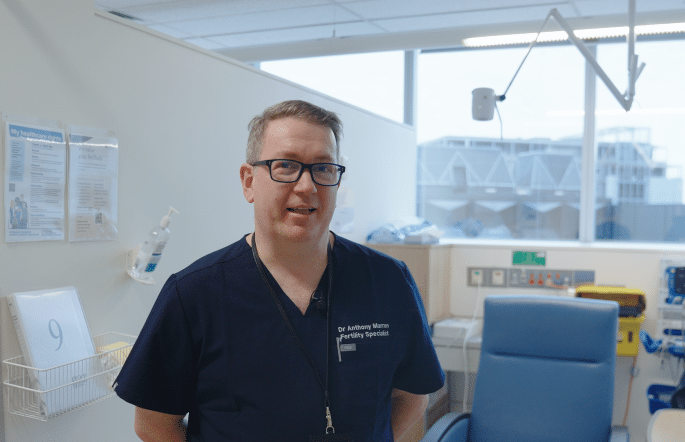
Hysteroscopy is a minimally invasive procedure used to examine and treat issues inside the uterus. A thin, lighted instrument called a hysteroscope is inserted through the cervix into the uterus, allowing the doctor to view the uterine cavity in detail. It can be used for diagnostic purposes, such as identifying abnormalities, or for treatment, including the removal of polyps, fibroids, or adhesions.

Hysteroscopy plays a vital role in diagnosing and treating conditions that may affect fertility or pregnancy outcomes. By providing a clear view of the uterine cavity, the procedure helps identify abnormalities that could interfere with implantation or embryo development, such as uterine septa, polyps, or scarring.
Beyond just being a diagnostic tool, hysteroscopies can also treat conditions in the same visit. For example, if a doctor finds a polyp, they can often remove it through hysteroscopy which can improve fertility and enhance the success of assisted reproductive treatments like IVF.
I follow the guidelines and standards of RANZCOG (Royal Australian and New Zealand College of Obstetricians and Gynaecologists), a leading authority on women’s reproductive health. For further reading, RANZCOG provides detailed patient resources: Hysteroscopy
A hysteroscopy might be suggested when there are specific concerns about your reproductive health that need a closer look. Common reasons for this procedure include:

Investigating through Hysteroscopy can help to determine the cause of any abnormal bleeding or irregular periods.
These non-cancerous growths can cause discomfort or affect your ability to get pregnant. Hysteroscopy can diagnose and often treat these issues right away.
If you've had multiple miscarriages, this procedure can help identify any uterine abnormalities that might be contributing to the problem.
If there's a suspicion of structural issues within the uterus, such as a septum (a division in the uterus), hysteroscopy allows for direct observation.
Evaluation and removal of retained products of conception after pregnancy loss

Hysteroscopy offers several advantages for women experiencing fertility challenges:
Hysteroscopy is usually performed as a day procedure and can be done under local or general anesthesia. Here’s what to expect:

Before we get started, your medical history will be reviewed to identify any underlying conditions that might affect the procedure. The procedure may be scheduled at a specific time in your menstrual cycle and you may need to avoid certain medications or fast before the procedure.
As part of the preparation, we will do a physical exam to check for any abnormalities and I may need to prepare your cervix, which could involve some dilation or using a speculum.

A hysteroscope is gently inserted through the cervix into the uterus. The uterine cavity is expanded using sterile saline to allow for better visualisation. The uterine lining will then be assessed through close examination.
Any abnormalities that are found during the examination can either be assessed or treated during the procedure. This will be done under a general anesthesia for your comfort.

Most patients can go home the same day and resume normal activities within a few days. You might experience some mild cramping or spotting but this typically resolves quickly. A follow-up appointment will be scheduled to discuss the results and check on how you’re feeling post procedure..

Whether you are experiencing unexplained infertility, recurrent miscarriage, or preparing for assisted reproductive treatments, a hysteroscopy can provide valuable insights and solutions to improve your chances of achieving a healthy pregnancy.
I'm an experienced fertility specialist and reproductive surgeon who is committed to seeing your journey through. If we decide that a hysteroscopy is the best course of action I will be able to provide you with complete continuity of care.
Hysteroscopy is a minimally invasive procedure used to diagnose and treat uterine abnormalities that may impact fertility.
Women with irregular bleeding, recurrent miscarriages, or suspected uterine abnormalities may benefit from hysteroscopy.
Conditions include fibroids, polyps, adhesions, and congenital uterine abnormalities.
Yes, it is a low-risk procedure that improves uterine health and enhances fertility potential.
Recovery is usually quick, with most women resuming normal activities within a few days.
Risks are minimal but may include infection, bleeding, or uterine perforation.
Success rates depend on the underlying condition, but many women experience improved chances of conception following treatment.
Understanding the emotional journey couples endure when they have difficulty conceiving or recurrent pregnancy loss is essential to my approach.
Creative Advertising by Kiin Agency.